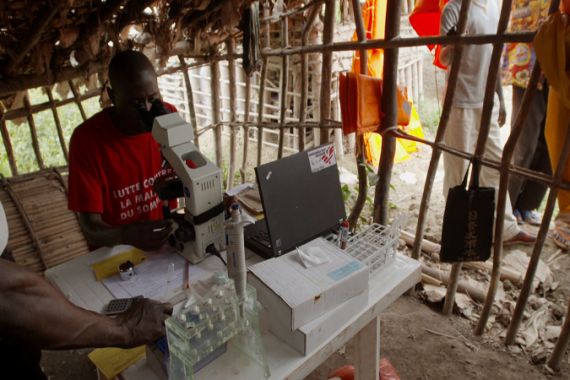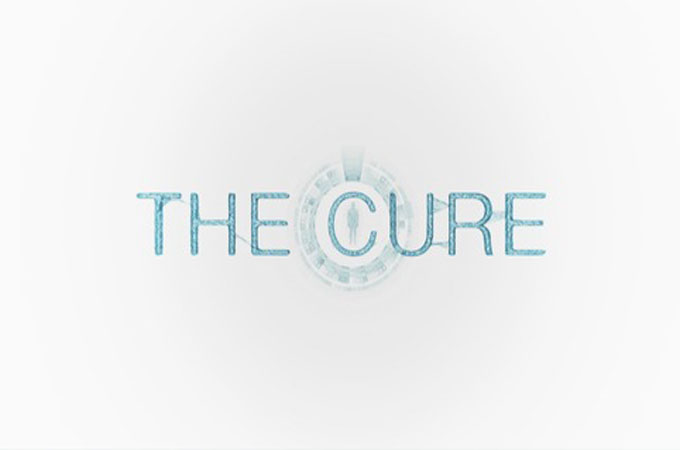On the trail of sleeping sickness
New pharmaceuticals can help combat the deadly disease, but delivering it to the people in need remains an obstacle.

As the narrow, hollowed out canoe glides up the River Uele in the Democratic Republic of Congo, Dr Javid Abdelmoneim gestures to the surrounding wilderness and says “sleeping sickness affects people this isolated, people this poor”. And this, in sum, is the challenge facing those attempting to eradicate the deadly disease which leads to serious brain damage, disrupted sleep patterns and eventually death.
A parasitic infection that poses a risk to 70 million people across 36 sub-Saharan African countries, sleeping sickness has been declared a “neglected” tropical disease by the World Health Organisation (WHO). The organisation assigns this classification to various diseases where no significant treatment has been developed for decades. “Why are they neglected?” asks Abdelmoneim. “The cold light of truth is they are neglected because poor people are affected.”
Keep reading
list of 4 itemsWoman, seeking loan, wheels corpse into Brazilian bank
UK set to ban tobacco sales for a ‘smoke-free’ generation. Will it work?
Poland lawmakers take steps towards liberalising abortion laws
In the case of sleeping sickness, which is also known as human African trypanosomiasis, the last significant medical breakthrough occurred in 1949. That was until Medecins Sans Frontieres (MSF), the international medical aid organisation, funded the Drugs for Neglected Diseases Initiative (DNDI) to help eliminate the infection. In 2009, DNDI delivered a new treatment which combined two drugs, nifurtimox and eflornithine, offering real hope that the parasitic disease would be eliminated as a health problem by 2020. The combined drugs provide an alternative to the previous arsenic-derived medication, melarsoprol. It is estimated that one in 20 patients were killed by the toxic treatment.
|
|
| The Cure: On the trail of sleeping sickness |
This development, however, is only part of the solution – the real challenge is delivering it to the people who need it most. “We don’t have a clue how many are living on the river. They are really, really remote,” explains Marie Cleret from MSF. “It’s not even villages, sometimes it’s just a few people living on the banks of the river.” It’s these people that MSF’s Democratic Republic of Congo (DRC) team are hoping to screen for the disease. Although deadly in the later stages, a person can be infected for months – even years – without displaying any major symptoms. By the time the disease kicks into the second phase, where parasites cross the blood-brain barrier and attack the central nervous system, it is harder to treat.
In Bunia, in north-eastern DRC, MSF’s mobile sleeping sickness teams prepare supplies and co-ordinate their movements which often take them between planes and motorbikes to canoes to reach far flung communities. With more than 85 percent of all reported cases occurring in the former Belgian colony, MSF launched an extensive campaign to screen those living in the most remote communities of the country. In 2012, they screened 60,000 people and treated more than 1,000 for the disease.
The team’s next journey is to Nekpotolia, a fishing village on an island in the middle of the River Uele, as the waterway snakes its way through the north of the DRC. Tables and chairs are loaded onto the canoes – alongside refrigerators keeping medical equipment between 2°C and 8°C.
MSF first visited Nekpotolia around six months ago, and found a sleeping sickness prevalence of 3.57 percent. Anything higher than one percent is considered an epidemic. This time they find another positive case of sleeping sickness. “Jean Pierre’s now got to have a lumbar puncture to stage the disease,” said Abdelmoneim. “We’ve got to get fluid from his spine so we know at what stage the disease is, how severe it is.”
 |
| The Cure’s medical reporters take you on a journey to the frontiers of world health. Watch the series here. |
Following the painful procedure – performed without anaesthetic – Jean Pierre is found to be a stage one patient, meaning he can be treated onsite. Another patient in the village of Kayibi wasn’t so lucky. Winston was diagnosed with stage two sleeping sickness and joined the MSF team for the ride back to the town of Dingila to undergo a treatment programme.
In developed cases of sleeping sickness such as Winston’s, the patient receives an intravenous infusion, twice a day, every day for ten days. The infusions, which come in heavy glass bottles, must be administered by a nurse or doctor restricting treatment to only those who have access to a hospital.
The latest development in the treatment of the disease is a drug, fexinidazole, currently being clinically trialed by MSF. The drug comes in tablet form, it’s light, it’s easy to administer and could be another step towards eradicating the disease. Although still in the early stages, if successful, “fexi” could be used to treat both stage one and two patients – which would simplify the treatment regimen. Dr Michel Sambili, an MSF doctor working on the trial, is optimistic. “With fexi, we will resolve above all the logistical headache,” he says. “It will solve lots of problems – especially for the poor population.”
In 1995, the WHO estimated the number of sleeping sickness cases at more than 300,000. Today the number of cases is just 10 percent of that. “When you think about where we were years ago and the situation we have now in the DRC, it’s clear we’ve made lots of progress,” remarks Jeroen Beijnsberger, an MSF coordinator.
“Yes, we still have a lot of work left, in terms of simplification of diagnosis and treatment – and monitoring will always be important – but I think the goal of elimination by 2020 is certainly attainable.”
Follow Arwa Aburawa on Twitter: @arwa_journalist